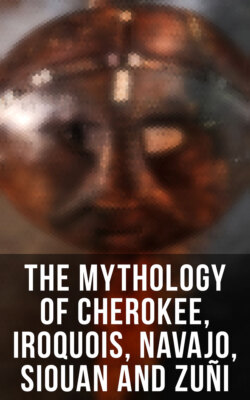Читать книгу The Mythology of Cherokee, Iroquois, Navajo, Siouan and Zuñi - James Mooney - Страница 33
На сайте Литреса книга снята с продажи.
The Algonquins
ОглавлениеThe Algonquian9 family surrounded the Iroquois on every side, and extended westward toward the Rocky Mountains, where one of their famous offshoots, the Blackfeet, gained a notoriety which has rendered them the heroes of many a boyish tale. They were milder than the Iroquois, and less Spartan in habits. Their western division comprised the Blackfeet, Arapaho, and Cheyenne, situated near the eastern slope of the Rocky Mountains; the northern division, situated for the most part to the north of the St. Lawrence, comprised the Chippeways and Crees; the north-eastern division embraced the tribes inhabiting Quebec, the Maritime Provinces, and Maine, including the Montagnais and Micmacs; the central division, dwelling in Illinois, Wisconsin, Indiana, Michigan, and Ohio, included the Foxes, Kickapoos, Menominees, and others; and the eastern division embraced all the Algonquian tribes that dwelt along the Atlantic coast, the Abnaki, Narragansets, Nipmucs, Mohicans (or Mohegans), Shawnees, Delawares, and Powhatans.
The Algonquins were the first Indians to come into contact with the white man. As a rule their relations with the French were friendly, but they were frequently at war with the English settlers. The eastern branch of the race were quickly defeated and scattered, their remnants withdrawing to Canada and the Ohio valley. Of the smaller tribes of New England, Virginia, and other eastern states there are no living representatives, and even their languages are extinct, save for a few words and place-names. The Ohio valley tribes, with the Wyandots, formed themselves into a loose confederacy and attempted to preserve the Ohio as an Indian boundary; but in 1794 they were finally defeated and forced to cede their territory. Tecumseh, an Algonquin chief, carried on a fierce war against the United States for a number of years, but by his defeat and death at Tippecanoe in 1811 the spirit of the Indians was broken, and the year 1815 saw the commencement of a series of Indian migrations westward, and a wholesale cession of Indian territory which continued over a period of about thirty years.
